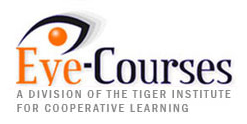A Scans and IOL Basics

Course Overview
A- Scan and IOL Basics
This course is intended for beginning, intermediate, and advanced levels. This course covers information regarding A Scan measurements, IOL types, and IOL calculation formulas and is presented online thru Eye-Courses.com.
After completing this section the student should be able to do the following:
- Define biometry testing of the eye
- Define the following in terms of ultrasound: frequency, wavelength, velocity, amplitude
- Define Hertz in terms of frequency
- Describe reflectance
- Identify the frequency of oscillation of most A Scan machines in Hertz
- Describe the 2 methods of testing axial length
- Explain how corneal compression affects axial length
- State the rule for error induced with corneal compression of .1 mm
- Use the equation for finding axial length from velocity and time
- List the ocular structures that create peaks on an A Scan
- Identify the ocular structure responsible for the main spikes in an A Scan (cornea, anterior and posterior lens, retina, sclera, orbital fat)
- List 3 common mistakes that will result in lower spike levels
- State what the average length of the following structures are: eye, anterior chamber, lens
- Describe why longer than average eyes may need a lower power IOL
- Describe why shorter than average eyes may need a higher power IOL
- List the parts to the A Scan machine
- Describe the steps to use to take an A Scan measurement
- Describe how comparing anterior chamber depth can help with error tracking
- Describe how evaluating spike height can help with error tracking
- Describe the gain level and how it affects the A Scan graph
- List 2 methods of performing non contact axial length measurements
- Identify 2 types of scleral shells
- Describe the spike pattern on an immersion A Scan
- Explain how the double cornea spike is helpful in error tracking
- List the steps to follow to perform immersion A Scan biometry
- List 2 drawbacks to the IOL master
- List 3 drawbacks when using immersion A Scans
- Describe what the IOL Master does
- List 3 advantages to measuring axial length with the IOL Master or Lenstar versus A Scan
- Describe what optimization of the IOL Master and Lenstar does
- List the measurements that are taken with the IOL Master and Lenstar
- Describe what Keratometry, anterior chamber depth, and white to white are measurements of
- Describe what special considerations need to be taken when measuring axial length of a pseudophakic eye
- Describe what special considerations need to be taken when measuring axial length of a silicone oil eye
- Describe how a posterior staphyloma can affect axial length measurement
- List the 3 materials used to make IOLs
- Describe what theoretical and regression IOL calculation formulas are
- List 5 IOL calculation formula names
- Describe what the following IOL types do: monofocal, Multifocal, toric
- List 3 types of Multifocal IOLs
- Describe how the Crystalens works
- List 2 types of toric IOLs
- Describe the 2 basic IOL shape designs
This course should take approximately two hour to complete. Successful completion of the post test is necessary to earn JCAHPO credit.
This course is not sponsored by JCAHPO; only reviewed for compliance with JCAHPO standards and criteria and awarded continuing education credit accordingly; therefore, JCAHPO cannot predict the effectiveness of the program or assure its quality in substance and presentation
